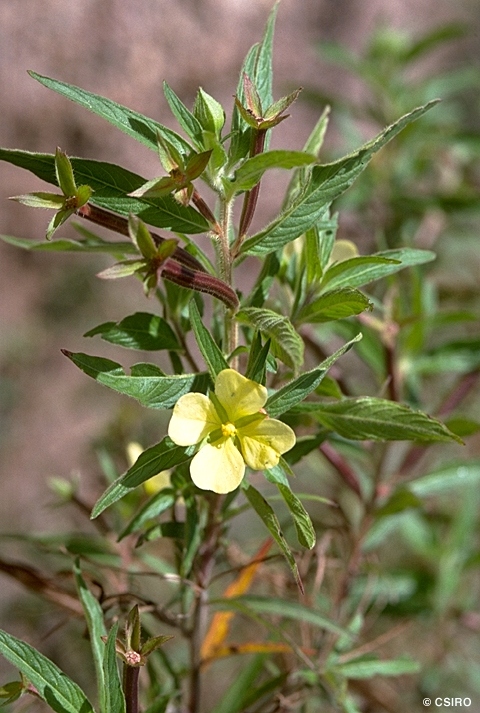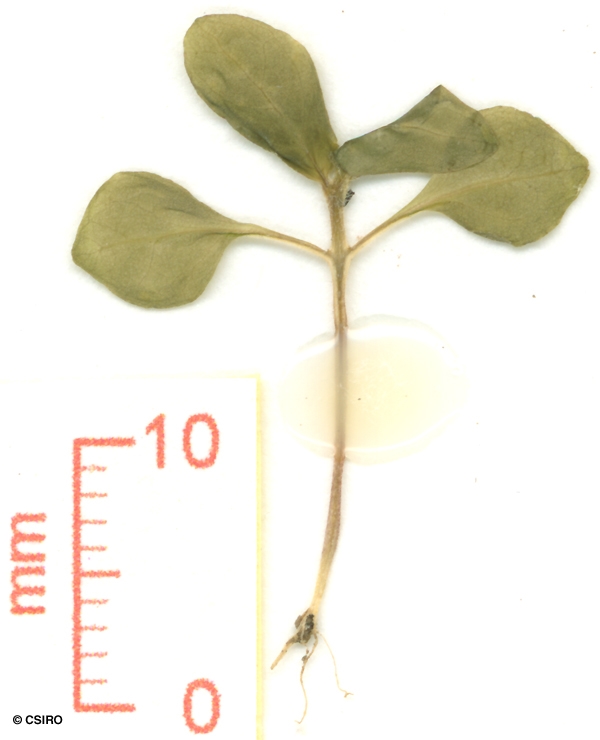Australian Tropical Rainforest Plants - Online edition
Ludwigia octovalvis (Jacq.) P.H.Raven




Raven, P.H. (1962) Kew Bulletin 15: 476.
Primrose, Willow; Primrose, Water; Willow Primrose; Water Primrose
Usually flowers and fruits as a shrub 1-2 m tall.
Leaf blades about 1-15 cm long. Both the upper and lower surfaces of the leaf blades clothed in long, pale coloured hairs. Twigs longitudinally grooved and clothed in pale coloured hairs. Some leaf oil dots elongated and +/- comet-shaped, the remainder +/- orbicular. Oil dots may only become obvious when the leaves are dry or partly dry.
Sepals obovate to narrowly obovate. Petals about 10-20 mm long. Outer surface of the calyx tube clothed in long white hairs. Stamens eight, the filaments alternating with the petals are glabrous, while those opposite the petals have hairs at the base. Stigma round, shiny and sticky, sitting in the end of the style like an egg in an egg cup.
Capsules about 2-4.5 cm long, splitting into eight linear lobes at maturity. Sepals persistent at the apex of the fruit. Seeds very small, about 0.6-0.75 x 0.5-0.7 mm, each consisting of two compartments, one containing the embryo and the other containing a sac of air. Embryo small, endosperm scanty.
Cotyledons +/- orbicular, about 7 x 7 mm, petioles long, approximating the length of the cotyledons. First pair of leaves often with ciliate margins. At the tenth leaf stage: leaf blade +/- oblanceolate, apex acute, base attenuate. Stipules small, less than 1 mm long, pink in colour and easily seen. Terminal buds and young shoots clothed in long white, erect hairs. Stems longitudinally ribbed or angled. Seed germination time 9 to 12 days.
Occurs in WA, NT, CYP, NEQ, CEQ and southwards as far as north-eastern New South Wales. Altitudinal range from near sea level to 800 m. Grows in swampy situations in open forest but occasionally found in similar situations in rain forest, vine forest and similar vegetation types. Also occurs in tropical regions in the rest of the world.
This species has been used medicinally in the Pacific islands. Cribb (1981).





